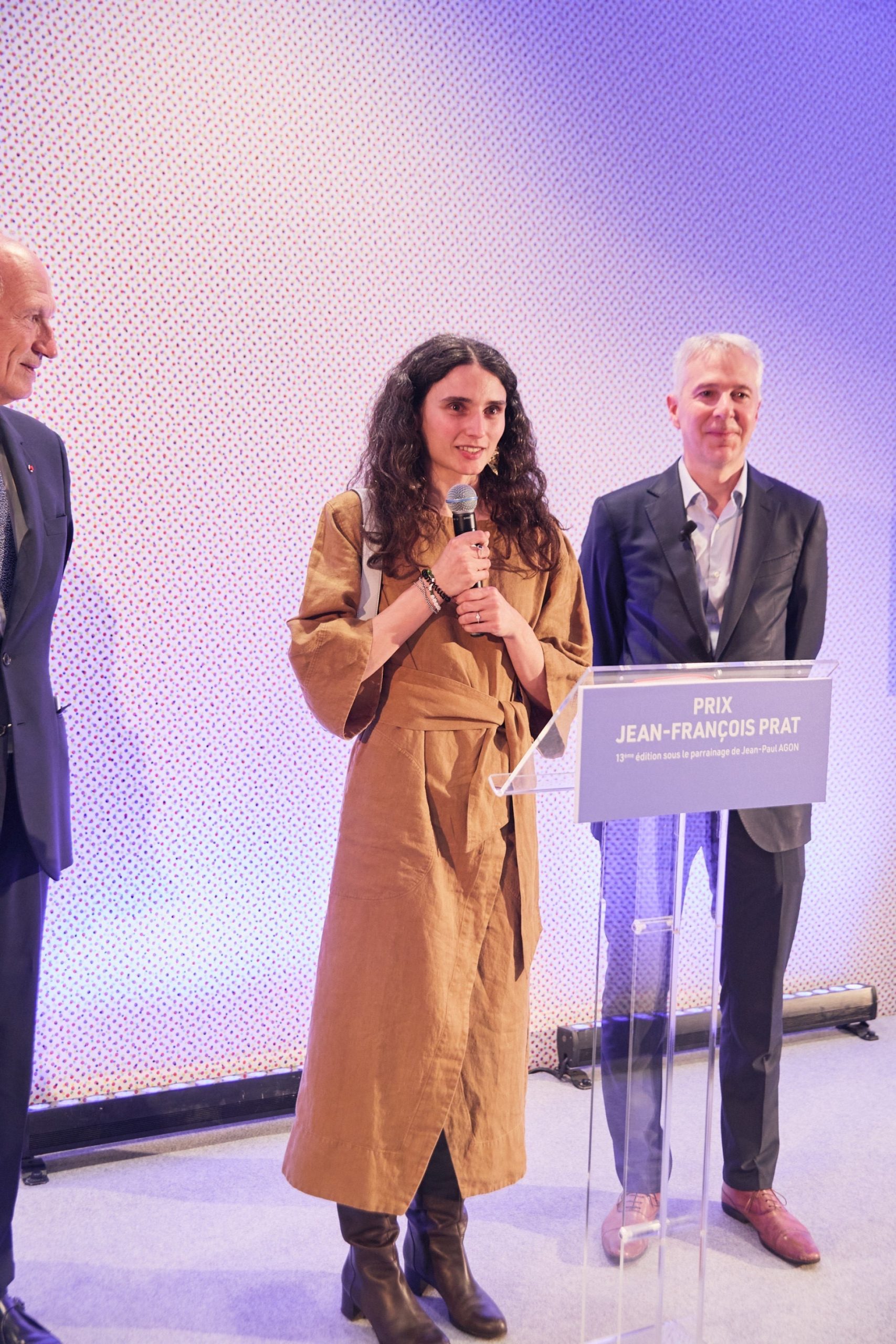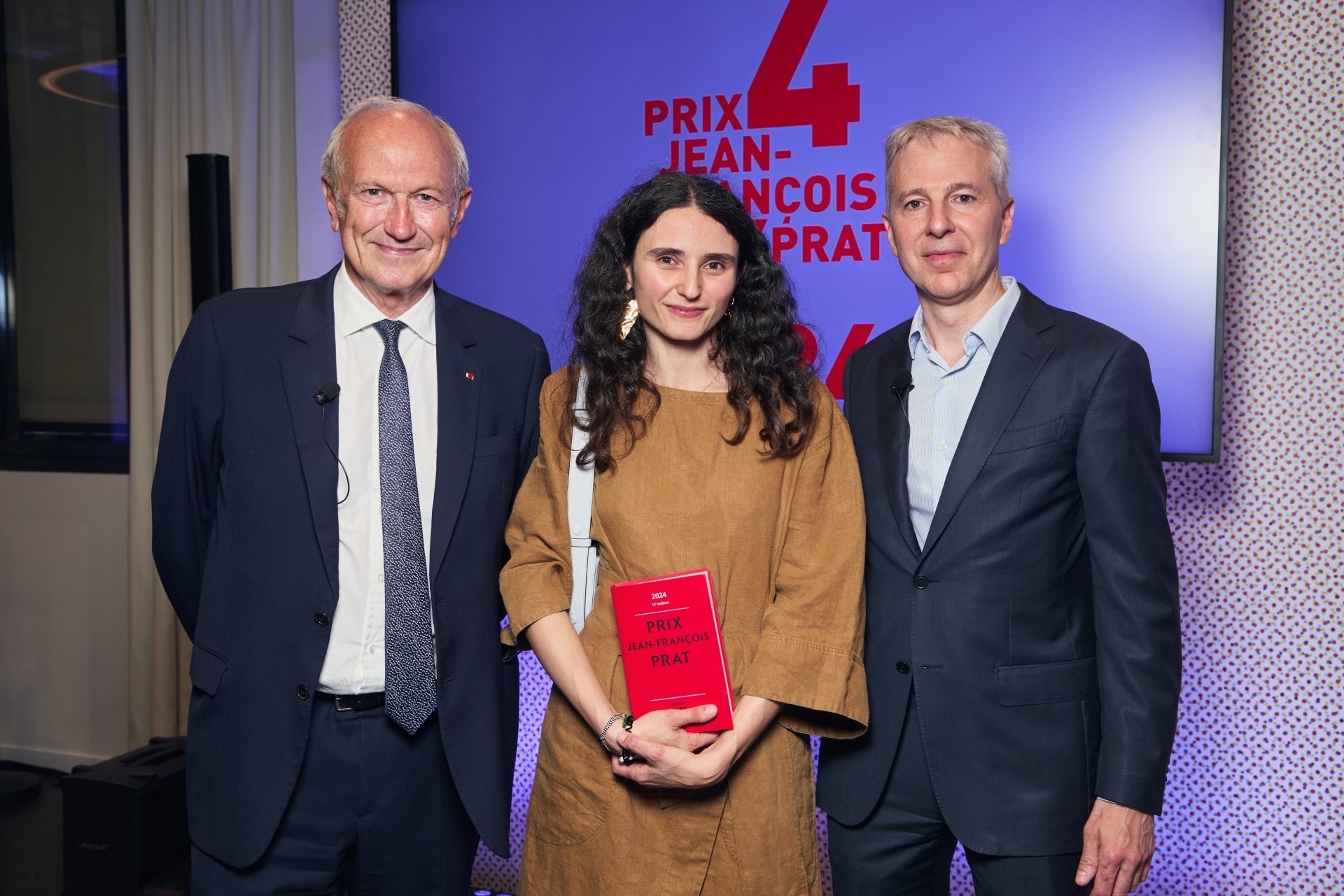Artist Christine Safa paints life in motion, capturing the essence of sites she traverses through metaphysical notations felt and collected by the body. The French-Lebanese artist frequently moves across the Mediterranean, between her home and studio outside Paris and her family’s native city of Beirut. She distills the landscapes she passes through into interconnected fragments, melding the intimacy of the land and the body, so that shoulders become mountains, or the horizon blends with her subject’s profile.
“I see my paintings as tributes, fragments of memories, that which remains. That’s what I paint, what’s left. As I paint, I give birth to the silhouette, the shape of the ruins of memories which both greet and are the victims of time; which for me means my experience of these interior landscapes,” she says.
In 2021, Safa was invited by Etel Adnan to participate in a group exhibition at Levy Gorvy Gallery in Paris. Solo exhibitions include Frac Auvergne, Clermont-Ferrand, France, 2022; Galerie Lelong & Co., Paris, France, 2022; and ICA Milano, Milan, Italy, 2022. In 2024, Safa was awarded the 13th Jean-Francois Prat Prize.
 Journey and education
Journey and education
I’ve always been painting since I was a child. Spending almost six years at the Beaux-Arts de Paris made me realize that you need to surround yourself with good painter/artist friends. It was all natural; I was spending more time at school than anywhere else and became close to the people who were looking at the same artists that I did. We shared techniques, discoveries, everything. Painting is hard, and we would complain together and try to help each other. Without the friends I made during that time, I wouldn’t be painting the way I am now and would be totally lost. It’s precious to have friends who understand what you go through and to be able to be there for each other.
Winning the Bredin Prat Prize
I was honored to make it through the pre-selections and wasn’t expecting to win or anything. It’s too soon to see and feel the impact. I am grateful every day, I am well surrounded, and I need time to process everything that is happening. It helps me continue painting but also puts me under a lot of pressure, so it’s a balance to find. As I said, it’s an honor to have this recognition, but what’s important for me is what’s happening in my studio every day. Like many other artists, I live with a kind of impostor syndrome and don’t believe in myself that much, which, in the end, helps me to be down-to-earth and keep working to be content with the paintings I am making, and just continue living.
Color and palette
I create my own paint with pigments and oil. I think I have a balance between what I see, nature, and what’s already been done in painting. Many of the colors I use are ochres, earth tones… it’s what I remember from some landscapes and moments I lived and also what I love about frescos, or primitive Italian painters, or fragments of wall paintings from ancient civilizations
Lebanese heritage and art
I have the impression that Lebanon was the starting point for many subjects in my paintings. In Lebanon, you live with ruins — Roman ruins and the ruins from war. When I think about it, my gaze wasn’t shaped by painting. Yes, I’ve leafed through books on painting, but I think that in my memories of my first moments looking at works of art, I see ruins, abandoned stones (Baalbek, Palmyra from a child’s point of view, it’s impossible to forget that), and above all these immense sculptures of the Virgin or other Saints on the roadside, or their scaled-down versions. Icons too, of course.
The moments I spend in Lebanon are always filled with different emotions and are a reset button for me. It’s where I question myself, see how I’ve grown, how the country is, how it affects me. Also and most importantly, it’s where my family and roots are, and I’ve been transmitted the love of the country, and I deeply feel connected in my own way even though I am only visiting. It’s something that I cherish and dream of each year.
Influences from Lebanon and France
From Lebanon, I definitely have landscapes in my mind, and also the ruins and shrines. Of course, I’ve discovered the work of Etel Adnan and Simone Fattal. From France, I’ve always been looking at the Nabis and still am.
 Meaningful painting stories
Meaningful painting stories
I made and still am doing some paintings after memories of spent time at Le Sporting in Beirut. It’s a place I go to look at the sea without going too far from home, and I also love, of course, how you’re still in the city. It represents my way of painting in the sense that when I am in Paris, I don’t have access to this view, but still, I am trying to remember, and it can be memories from last summer or the one before or five years ago. It’s the same subject painted several times, from different memories.
——————————————————————————————————————————–
If you liked reading this, check out our interview with artist Adrian Pepe.
Loading
